Risk-Based Approach to Data Protection and GDPR Compliance
VerifiedAdded on 2023/06/14
|5
|693
|182
Report
AI Summary
This report provides an overview of a risk-based approach to data protection within the framework of the General Data Protection Regulation (GDPR). It identifies two primary risks related to Personally Identifiable Information (PII): stolen credentials and phishing attacks, as well as lost or stolen storage devices. The report details mitigation strategies for each risk, including user training, email filtering, frequent backups, data loss prevention solutions, and software updates to combat phishing. For lost or stolen storage devices, the mitigation steps involve identifying security weak points, understanding legal obligations under GDPR, implementing technological protections like disabling automatic downloads and regularly updating passwords, developing a data breach response plan, and using antivirus software. The report emphasizes the importance of these risk management strategies to ensure compliance with GDPR and protect sensitive personal data. Desklib offers more solved assignments and resources for students.
1 out of 5
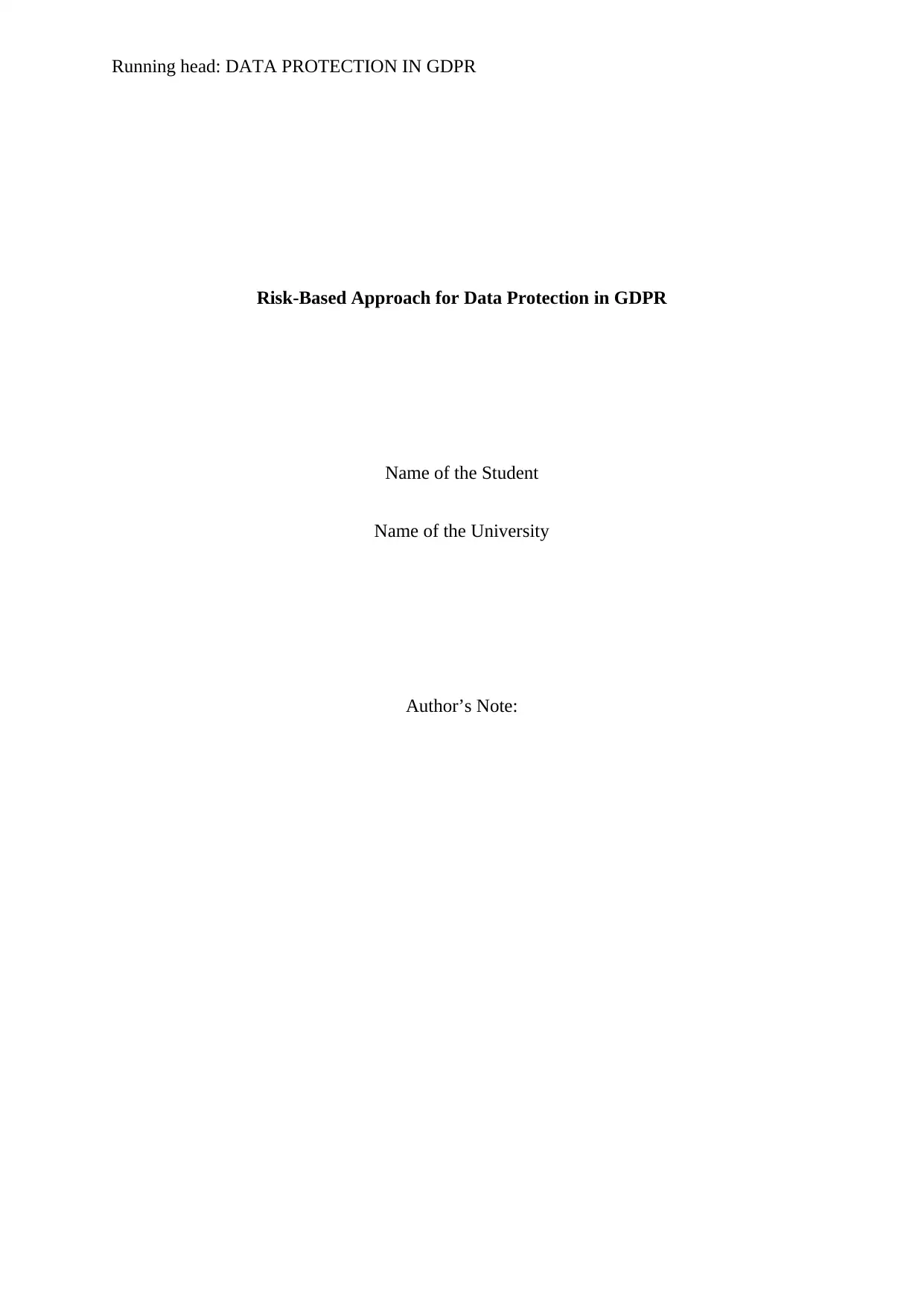
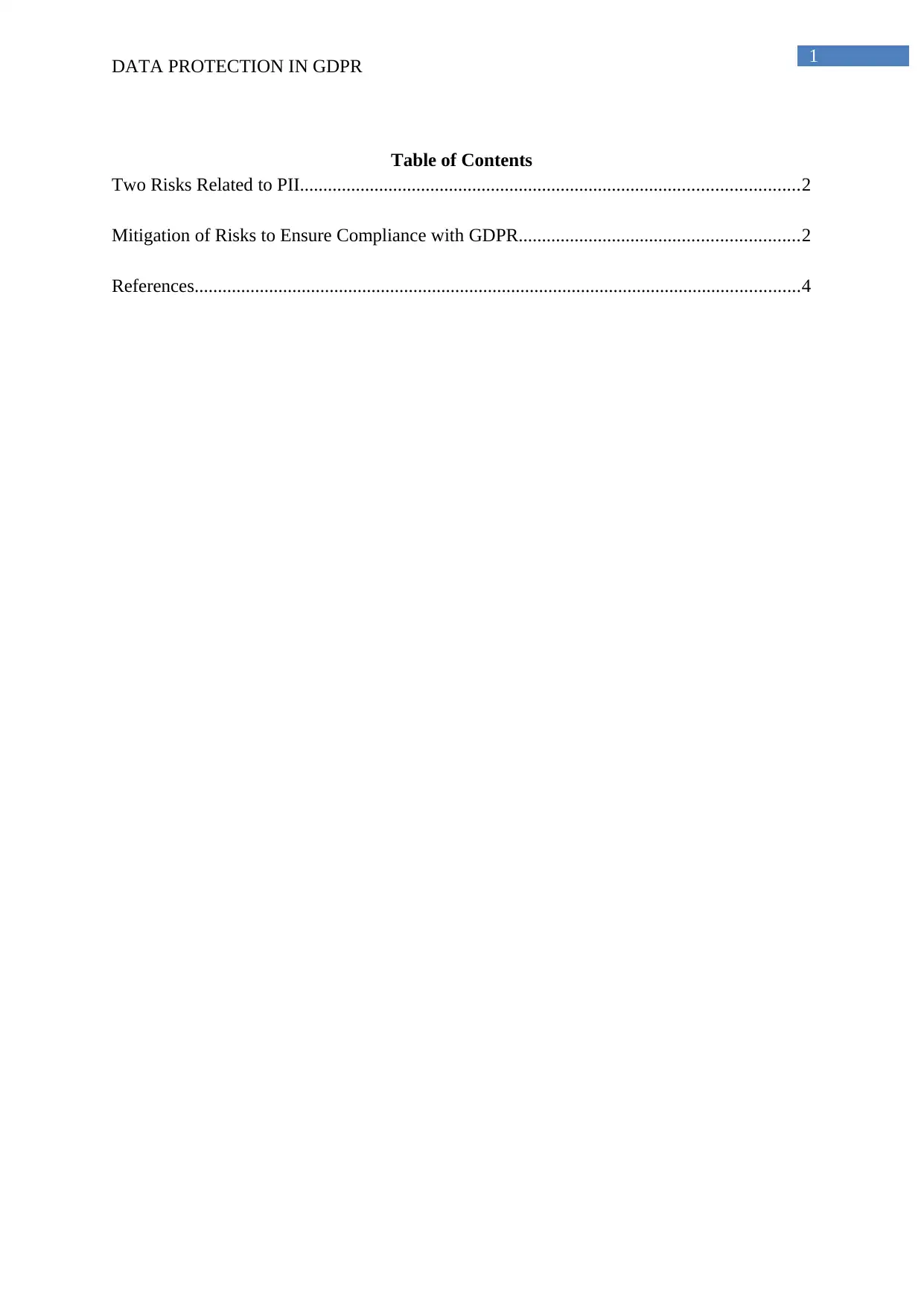
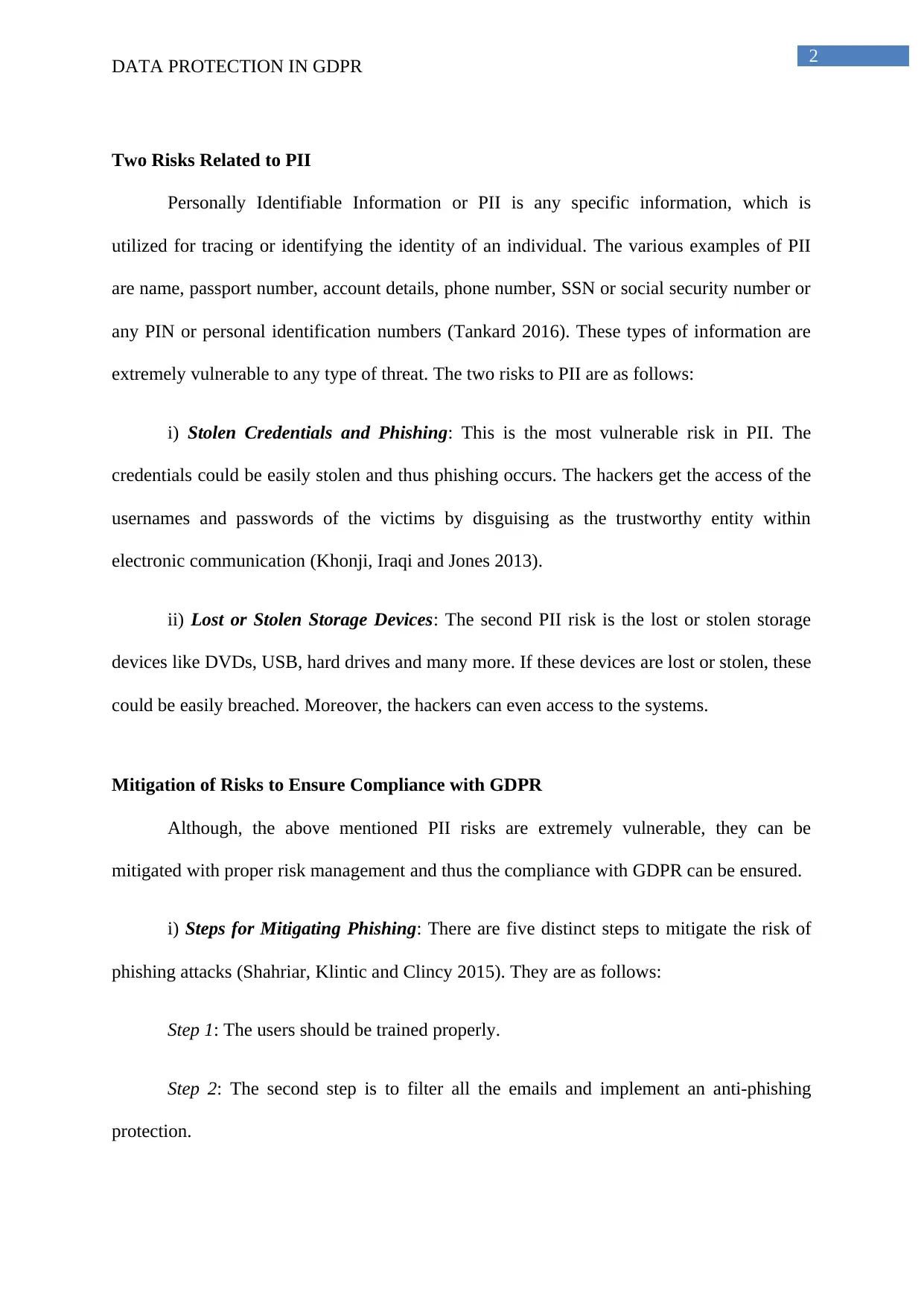

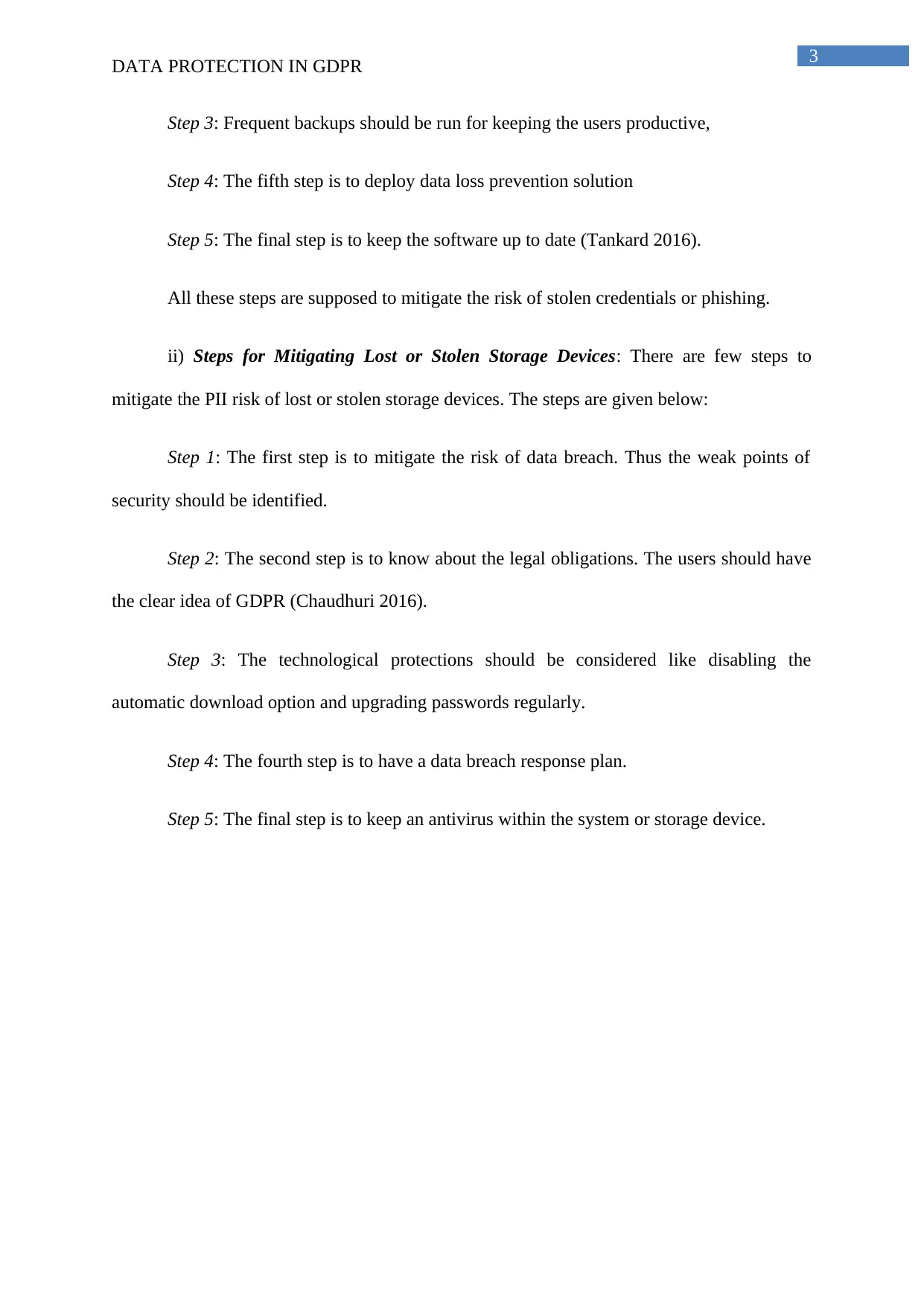
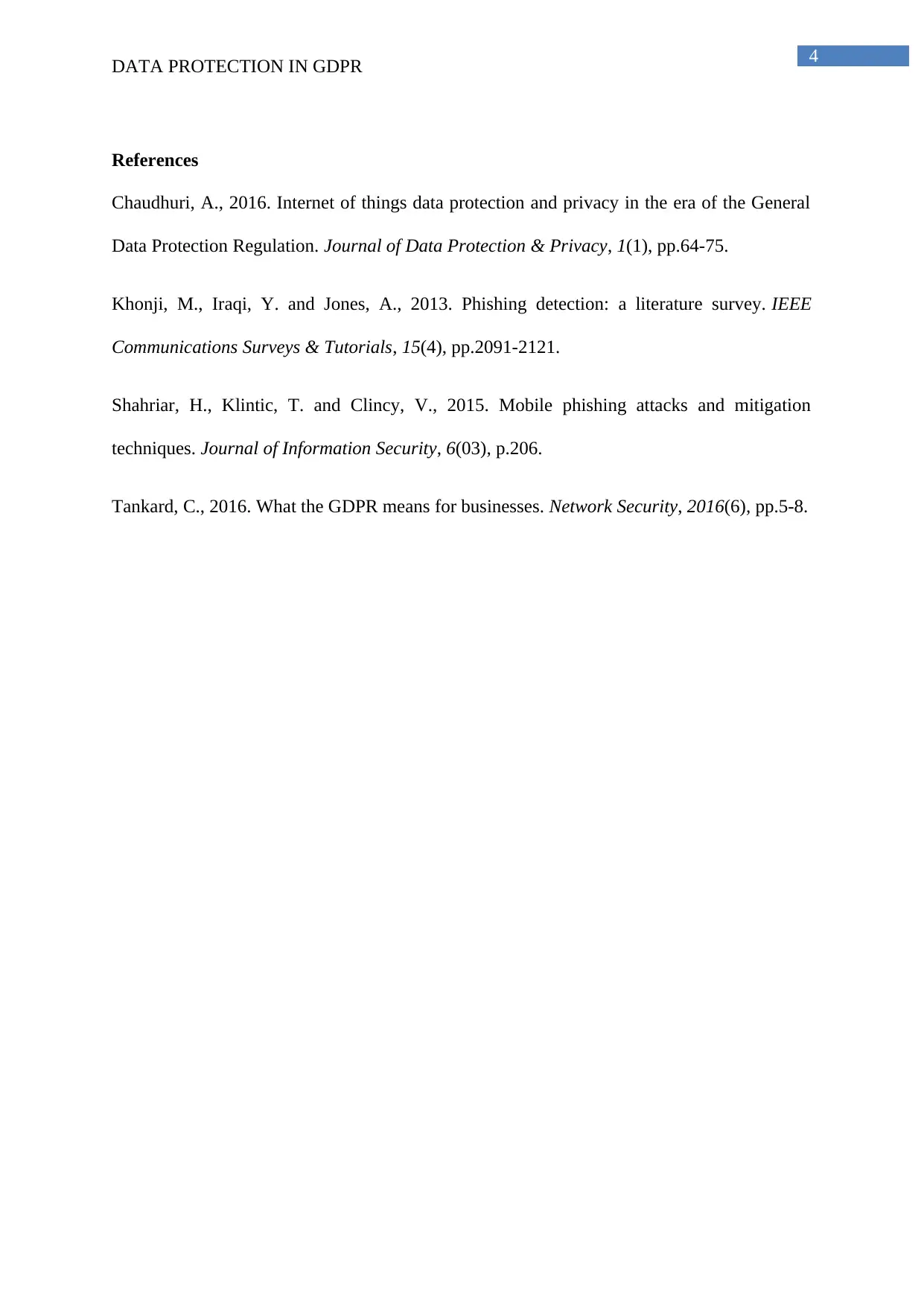






![[object Object]](/_next/static/media/star-bottom.7253800d.svg)